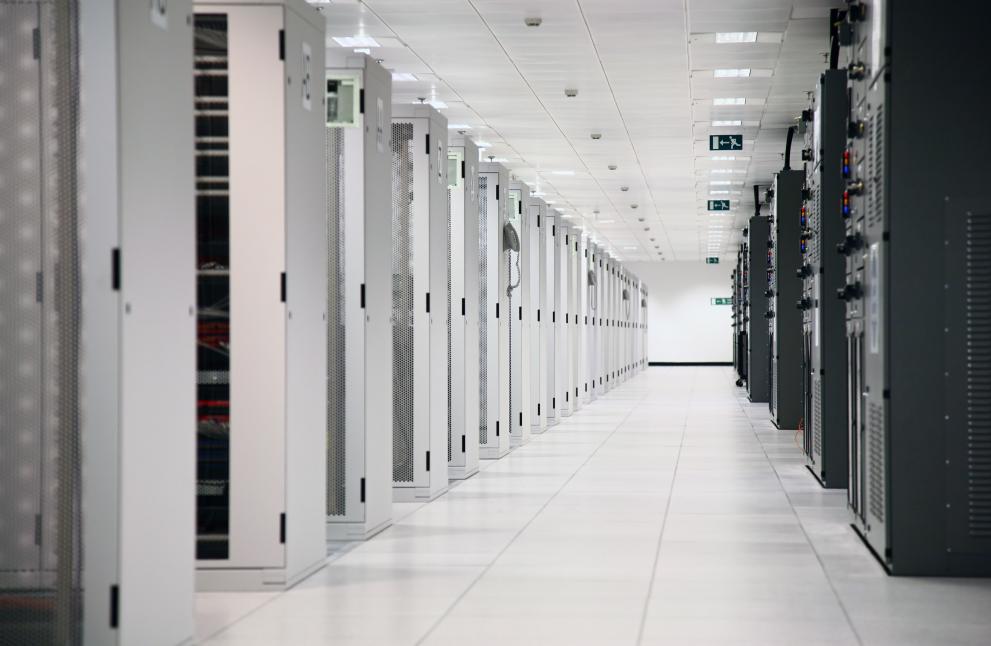
Data centres have become the backbone of our interconnected world, facilitating the seamless flow of data and information. However, their energy-intensive nature has raised concerns about their environmental impact, sustainability and energy supply security.
To address these issues, the European Commission's Joint Research Centre (JRC) has developed the EU Code of Conduct (CoC) for Data Centres. This voluntary initiative encourages data centre operators and owners to adopt best practices that reduce energy consumption and promote sustainability.
Data centres consume a significant amount of energy, contributing to the overall electricity consumption in the European Union (EU). Currently, these facilities consume approximately 40-45 TWh, accounting for 1.4-1.6% of total EU electricity consumption.
While these figures may not seem alarming, it is crucial to take proactive measures to curb energy demand and achieve the Net-Zero emissions Scenario by 2050. In fact, data centres must reduce their greenhouse gas (GHG) emissions by half by 2030 to stay on track.
Measuring efficiency
The EU CoC for Data Centres utilises Power Utilisation Effectiveness (PUE) as a key metric to assess the overall efficiency of a data centre. PUE represents the ratio of total data centre input power to IT load power. The lower the PUE value, the higher the efficiency of the facility.
The ultimate goal is to achieve a PUE close to 1.0, indicating a perfectly efficient data centre where almost all power is delivered to IT equipment.
Making EU data centres more sustainable
Currently, EU data centres have an average PUE of 1.6, while some still report values above 2.0. By regularly monitoring PUE, data centre operators can identify areas of inefficiency and implement targeted energy-saving measures.
Those who demonstrate the effective adoption of the CoC best practices, leading to significant reductions in energy consumption, are eligible for the annual EU Code of Conduct in Data Centres Awards.
Awardees
In 2023, the following data centres have been awarded for their achievements between 2020 and 2022:
- Grenoble Alpes University for its IMAG data centre, France. Located on the university campus of Saint Martin d'Hères, this small data centre, enclosed in a larger building, reached a PUE of 1.25 by means of direct free cooling and ground water to produce cold water.
- DATA4 for its DATA4 Milano, Italy. Thanks to the use of direct free cooling and cold air containment, it measured a PUE of 1.40, despite the hot climate of the region.
- T-Systems for its data centres Biere_1 and Biere_2, Germany, with a PUE of 1.375, through the implementation of 87 best practices, including cold aisle containment with highly efficient airflow and heat recovery for heating office and storage space.
- Atos data centre Longbridge, UK, with a PUE of 1.16 by implementing 92 best practices, including free cooling, DC lighting with LED and lights dimmed to 10% for efficiency & safety, only activated by motion detection. Data centre Birmingham, UK, with 107 implemented best practices, such as free cooling and the replacement of old UPS units to increase efficiency from 95.1% to 96.1%, resulting in a PUE of 1.508. Data centre Fuerth, Germany, with a PUE of 1.42, thanks to measures like white space cooling optimisation (WSCO), which entails intelligent (AI) air handler fan speed adjustment, free cooling and waste heat usage for office space heating, which replaces traditional oil heating with heat pumps using DC heat as energy source.
- Interxion Deutschland GmbH, for its FRA 08, FRA 10, FRA 12 and FRA 13 data centres, Germany, where the implementation of 103 best practices lowered the PUE values to 1.45, 1.29, 1.187 and 1.135 respectively.
- Microsoft Gavle GVX01, Sandviken GVX11, and Malmö MMA01 data centres, Sweden, all recording a very low PUE of around 1.2, with the implementation of several best practices and free cooling.
Background information
The EU CoC for Data Centres is one of three European Commission instruments aimed at enhancing the energy efficiency of these facilities. The other two instruments are:
- Ecodesign Regulation on servers and data storage products
- EU Green Public Procurement criteria for data centres, server rooms and cloud services
The European Commission has also linked energy efficiency in data centres to policy and funding initiatives, including:
- Proposal for a Directive on Energy Efficiency (recast) This proposal introduces new elements to improve the energy efficiency and sustainability monitoring of data centres.
- In addition, the Taxonomy Regulation and its Delegated Act adopted in July 2021 provide the framework for investments to be qualified as sustainable and has a specific section on data centres
- Funding programmes like Horizon Europe, Connecting Europe Facility 2, Digital Europe programme, InvestEU and the Recovery and Resilience Facility support the deployment of an innovative, green and secure cloud.
Details
- Publication date
- 5 September 2023
- Author
- Joint Research Centre
- JRC portfolios




